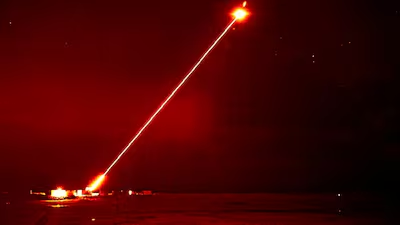
The DragonFire laser-directed energy weapon (LDEW) system in use during a trial at the Ministry of Defence's Hebrides Range, Scotland. Reuters
The DragonFire laser-directed energy weapon (LDEW) system in use during a trial at the Ministry of Defence's Hebrides Range, Scotland. Reuters
UK reveals first laser weapon DragonFire which shoots downs drones
Technology cuts through incoming targets at the speed of light
